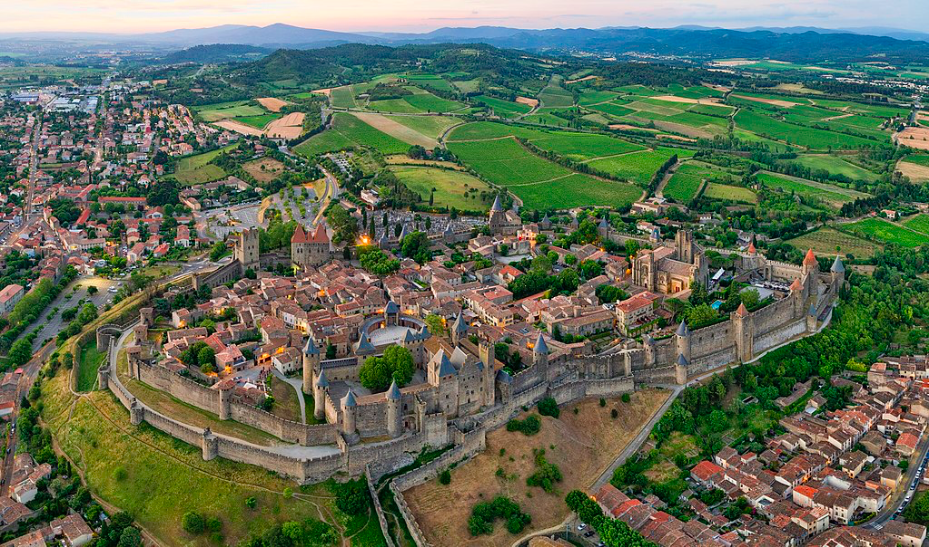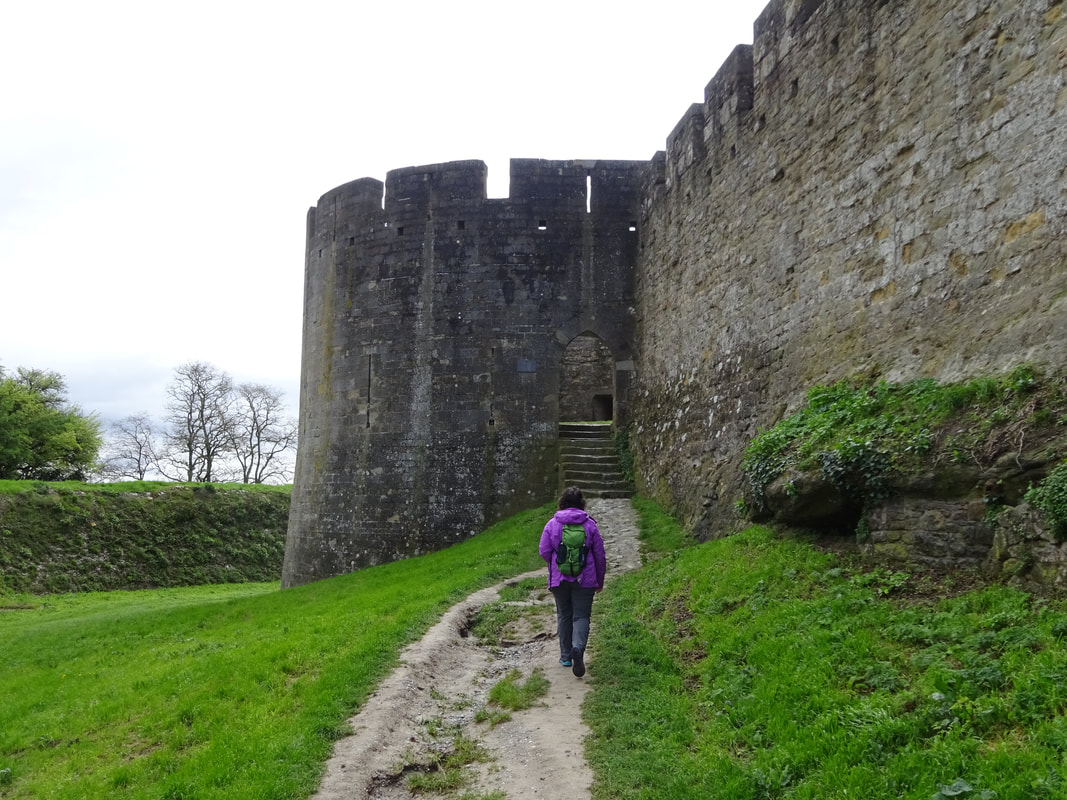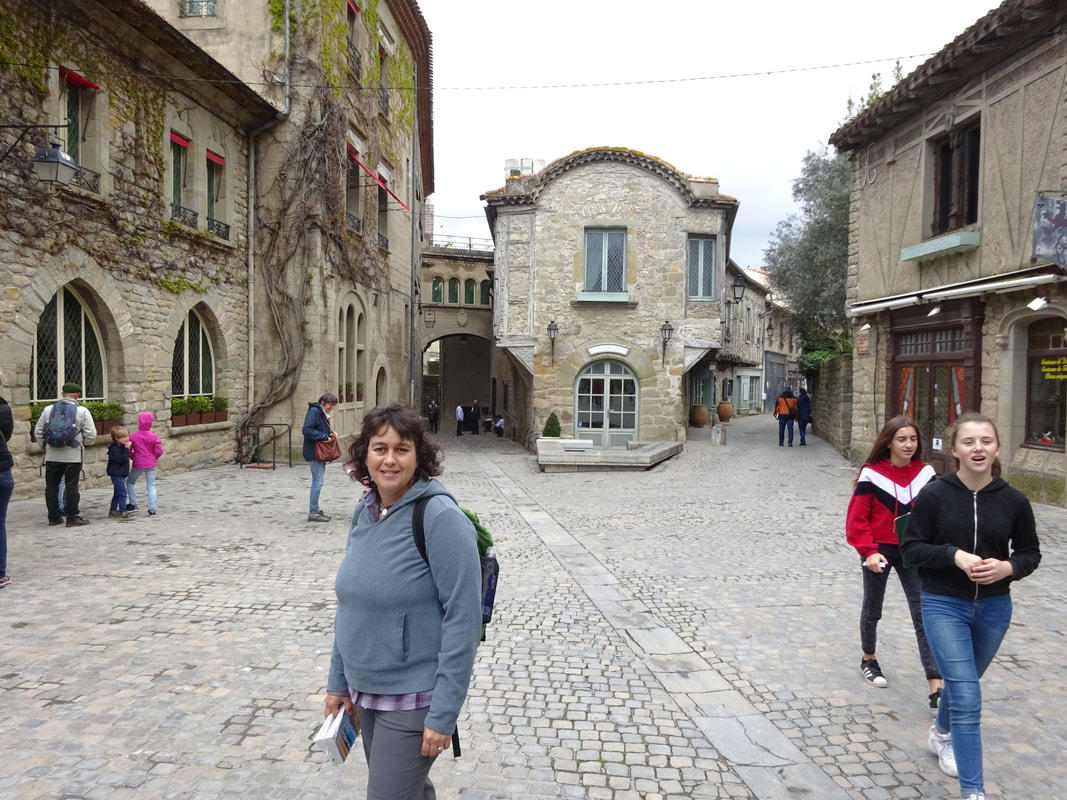11-12 April 2018
The Pont Valentré is a 14th-century six-span fortified stone arch bridge crossing the Lot River to the west of Cahors. Construction began on 17 June 1308 and completed 1378 with six Gothic arches and three square bridge towers, although it opened for use in 1350. Originally fortified at both ends, the western tower has not survived. A major restoration was performed from 1867 to 1879 by Paul Gout.
In local folklore, the foreman, exasperated by the slow pace of the work, signed a pact with the Devil. The Devil promised to help expedite the work and, if he carries out all of the foreman's orders, then the foreman's soul would be forfeit.
Having seen the bridge built on time, the foreman regrets his decision and issues a final order to the devil to go and collect water for the other workers using a sieve (a strainer, ha!). In revenge for having been tricked, the Devil sends a demon each night to loosen the final stone in the central tower (known as the Devil's Tower) to ensure that the bridge is never finished and must be repaired each day.
During the restoration of the bridge in 1879, the architect Paul Gout inserted a stone bearing the sculpted image of an imp into the central tower. As a result, according to the updated legend, every time the Devil checks to see that his vandalism has been carried out he is confused into thinking that the stone image is one of his demons tasked with dismantling the bridge.
The Pont Valentré is a 14th-century six-span fortified stone arch bridge crossing the Lot River to the west of Cahors. Construction began on 17 June 1308 and completed 1378 with six Gothic arches and three square bridge towers, although it opened for use in 1350. Originally fortified at both ends, the western tower has not survived. A major restoration was performed from 1867 to 1879 by Paul Gout.
In local folklore, the foreman, exasperated by the slow pace of the work, signed a pact with the Devil. The Devil promised to help expedite the work and, if he carries out all of the foreman's orders, then the foreman's soul would be forfeit.
Having seen the bridge built on time, the foreman regrets his decision and issues a final order to the devil to go and collect water for the other workers using a sieve (a strainer, ha!). In revenge for having been tricked, the Devil sends a demon each night to loosen the final stone in the central tower (known as the Devil's Tower) to ensure that the bridge is never finished and must be repaired each day.
During the restoration of the bridge in 1879, the architect Paul Gout inserted a stone bearing the sculpted image of an imp into the central tower. As a result, according to the updated legend, every time the Devil checks to see that his vandalism has been carried out he is confused into thinking that the stone image is one of his demons tasked with dismantling the bridge.
Modern pilgrims walk this way, we walked all the way...................................from our car.
Albi
The Cathedral Basilica of Saint Cecilia, also known as Albi Cathedral, seat of the Catholic Archbishop of Albi. First built as a fortress in the aftermath of the Albigensian Crusade; begun in 1282 and under construction for 200 years, and still the largest brick building in the world.
The most interesting of all the interior decoration is the huge (16.4m x 15.6m) mural of The Last Judgment that covers both sides of the rounded west wall of the nave. Painted between 1474 and 1484 by unknown Franco-Flemish artists, it is considered one of the most important works of art of the Late Middle Ages.
On to the next tour - sights along the way, including Tupperware (Tim's granny would be proud) and rainbows over vineyards.
Cité de Carcassonne
Founded during the Gallo-Roman period, the citadel has 1.9 mi long double surrounding walls interspersed by 52 towers. The town has about 2,500 years of history and has been occupied in different ages by Romans, Visigoths, Saracens, and Crusaders. At the beginning of its history it was a Gaulish settlement, then in the 3rd century A.D., the Romans transformed it into a fortified town. The Roman defenses were in place by 333 AD, when the town is described as a castellum. The original walls were supported by between 34 and 40 towers, spaced from 18 to 30 metres apart along the curtain wall. Each tower was semicircular in plan and about 14 meters tall.
The Gallo-Roman walls were rebuilt during the town's occupation by the Visigoths in the 5th and 6th centuries, but much of the original structure remained in place. After 1226, an additional line of fortifications was added outside of the Roman walls. The town was finally annexed to the kingdom of France in 1247 A.D. It provided a strong French frontier between France and the Crown of Aragon. During this period, the inner, Roman walls were largely demolished and replaced, while the new outer walls were reinforced and extended to the south. Construction continued into the reign of King Philip IV in the early 14th century.
In 1659, after the Treaty of the Pyrenees, the province of Roussillon became a part of France, and the town lost its military significance. Fortifications were abandoned and the town became one of the economic centers of France, concentrating on the woolen textile industry.
Tomorrow we will tour the citadel, but today we will smell the flowers and dine on French tapas with wine.
The next day, making our way to the citadel, crossing a bridge with Roman-era underpinnings.
Going a bit up, and along, and around, to reach the front door.
We're here, the price of entrance free (they want people to empty their pockets inside). See the irregular stone work - evidence of the centuries of rebuilding, reusing, and reengineering that started with Romans.
Gerri: "Dammit, they can't have my money for cokes and ice cream, but I could go for some medieval fry bread right now" (to the right) "I okay now, much calmer.............where's my fry bread dammit"
Kevin Costner's Robin Hood was filmed here in this castle within the citadel walls.
Donkey's: "buy us, no buy me, no buy I.......you ass"
Donkey's: "buy us, no buy me, no buy I.......you ass"
These children never moved the whole time of our visit; I bet they wish they were somewhere else.
The visit of the citadel fortress is complete, time for some food of the locals.











































 RSS Feed
RSS Feed
